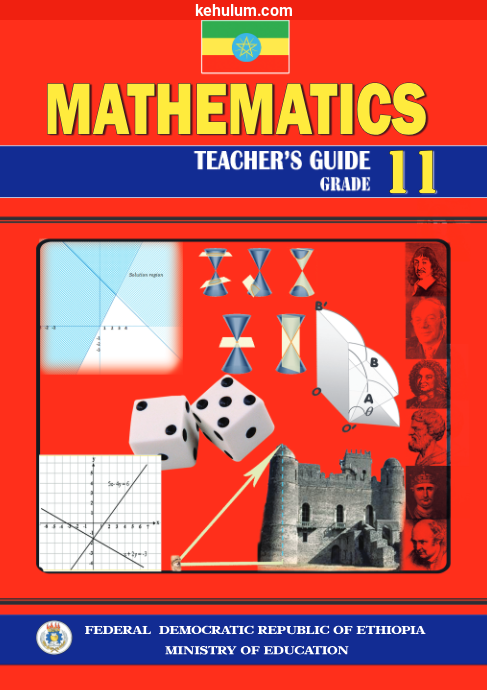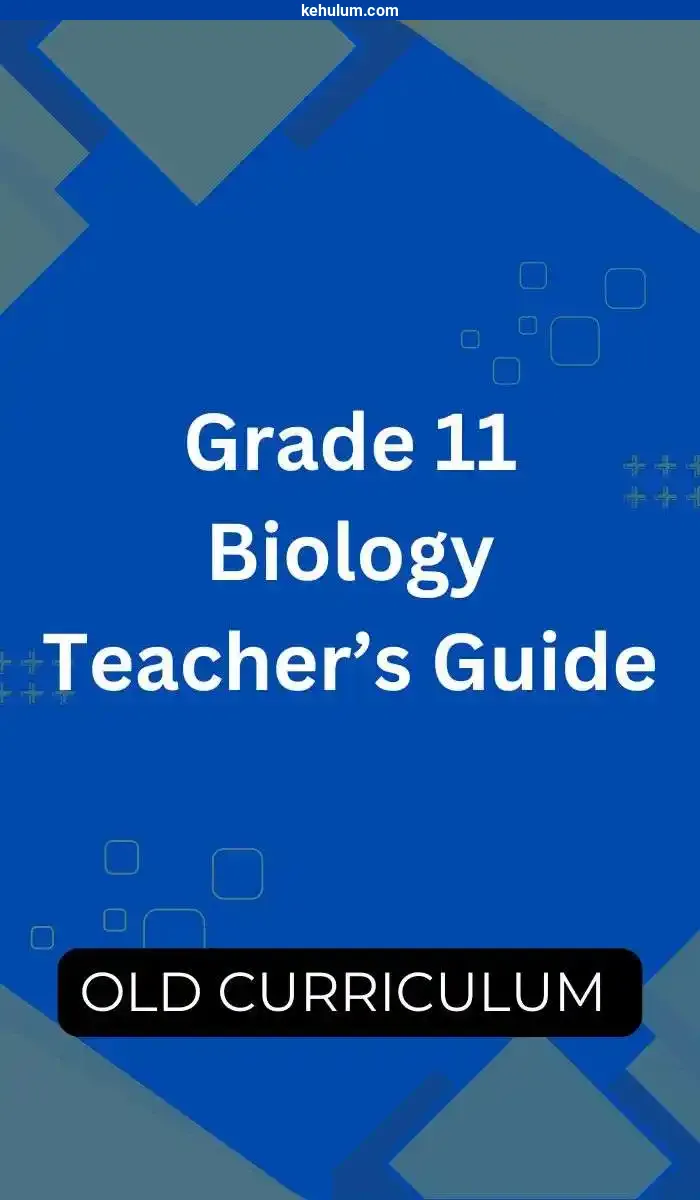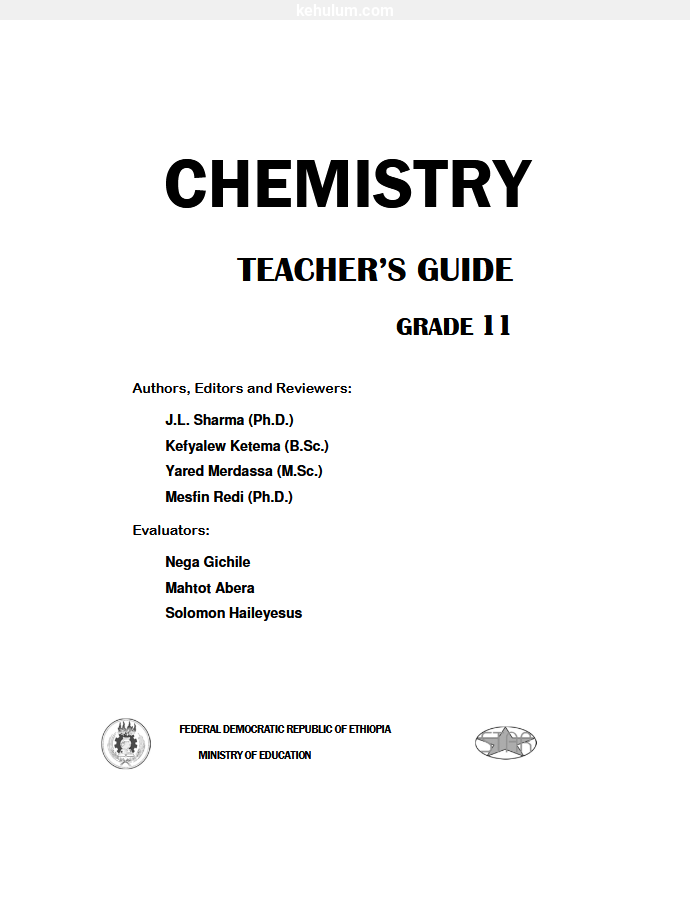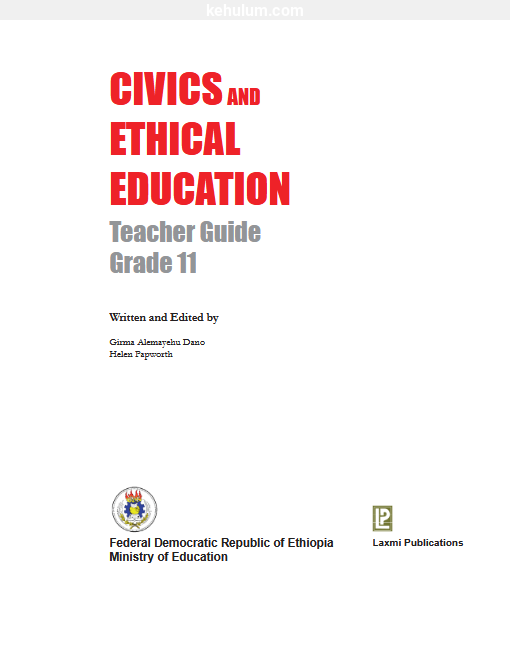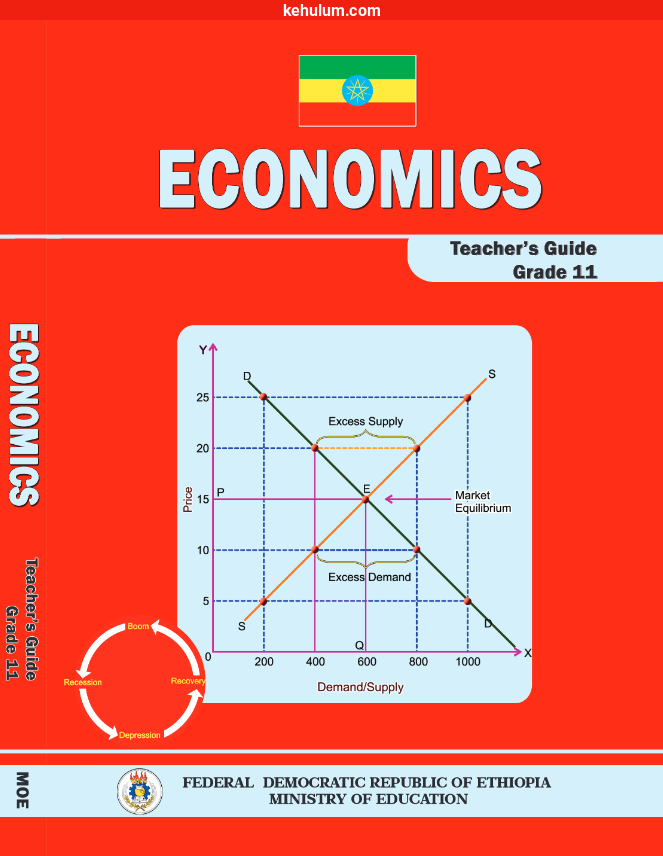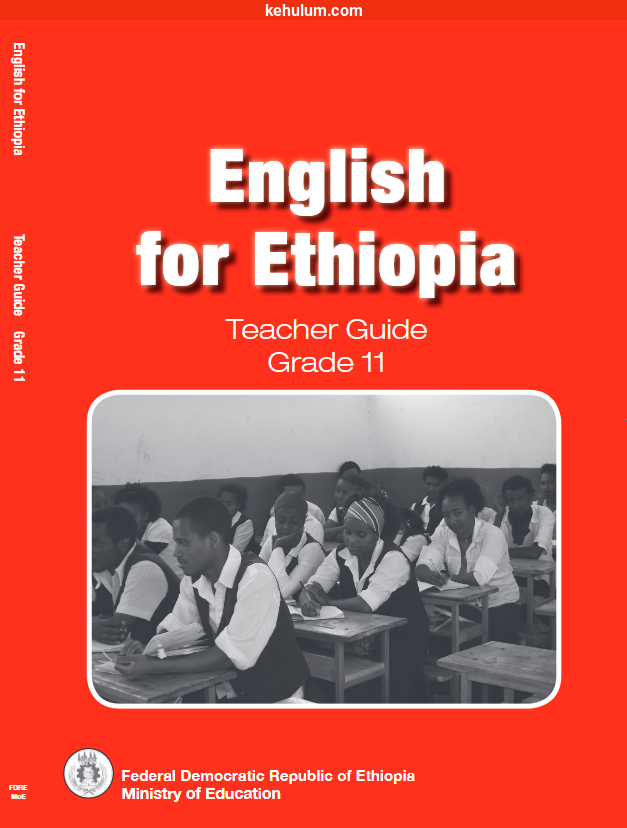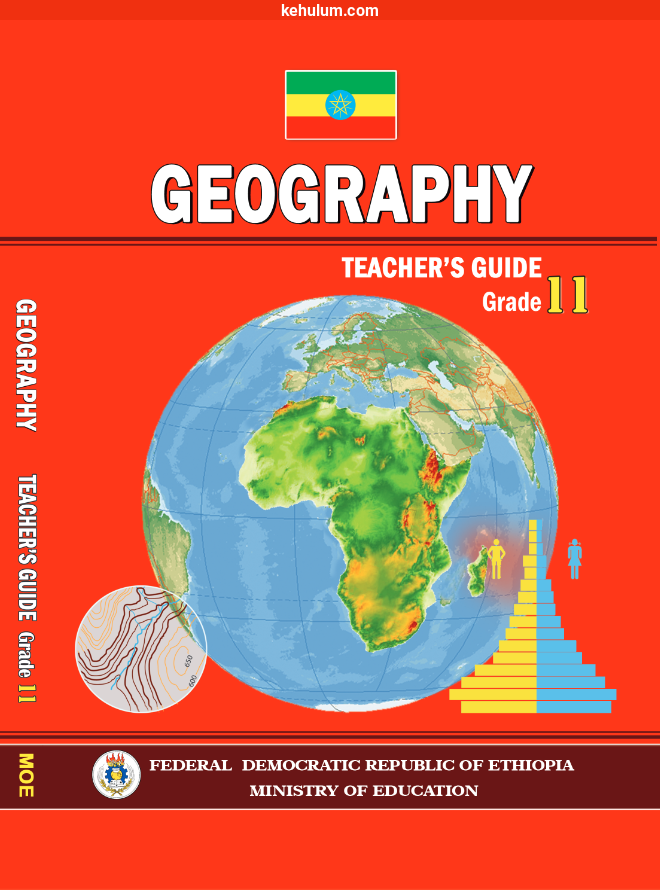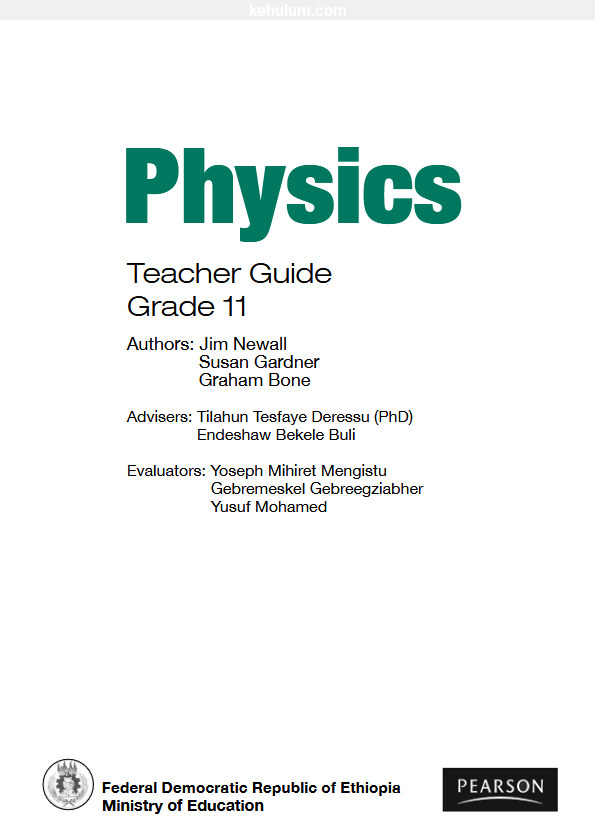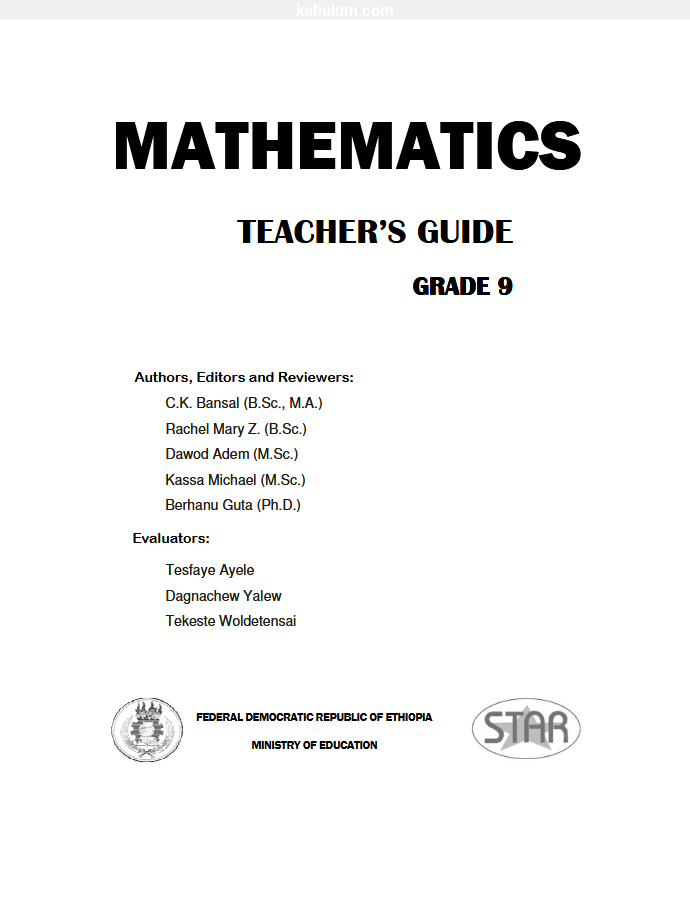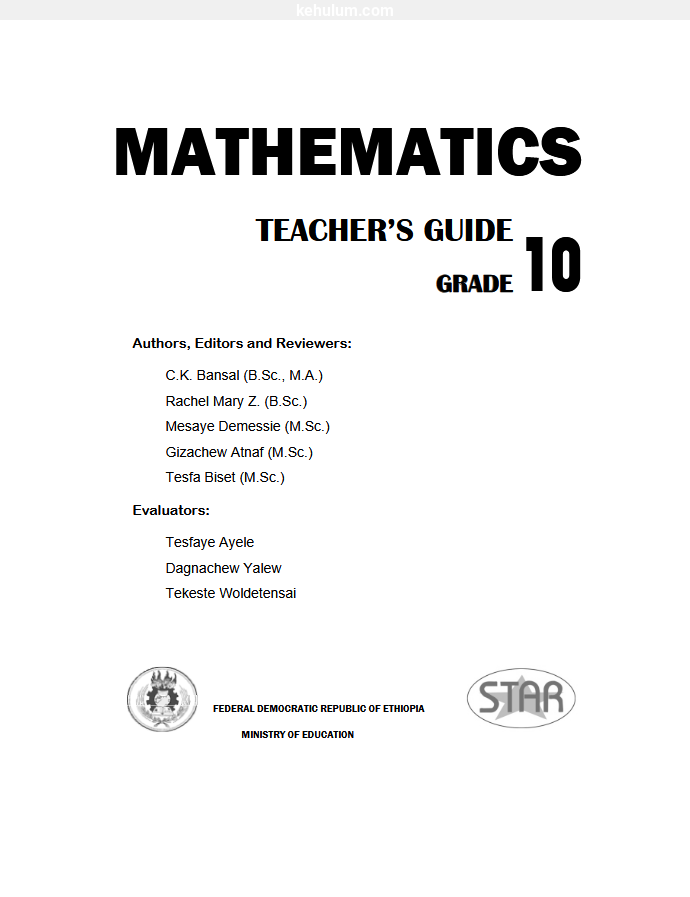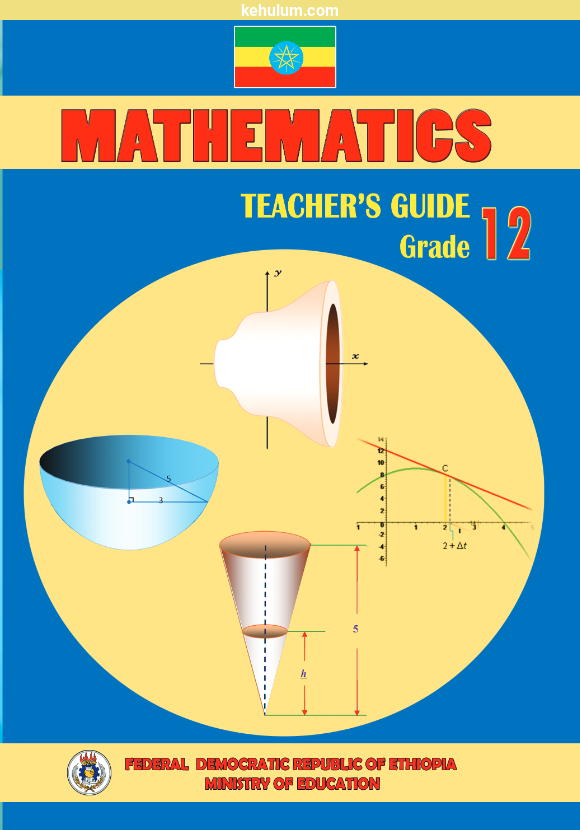Advertisement
Related grade 11 old curriculum Teacher's Guide
Ethiopian Old Curriculum Grade 11 Mathematics Teacher’s Guide Overview
Looking to teach Grade 11 Mathematics under Ethiopia’s Old Curriculum? This free PDF download of the Ethiopian Grade 11 Mathematics Teacher’s Guide—published in 2002 by the Ministry of Education—offers everything instructors need to deliver engaging and structured mathematics lessons. This guide has 498 pages and 11 units, the guide walks teachers through detailed learning objectives, effective classroom strategies, illustrative examples, and end-of-unit assessments. It aligns with old national standards and supports conceptual depth, making it essential for teachers in Ethiopia.
Authors and Contributors
his Teacher’s Guide was developed and reviewed by:
- Rachel Mary Z.
- Kassa Michael
- Kinfegabrail Dessalegn
- Sebsibe Teferi
- Tilahun Abebaw (Ph.D.)
- Hunduma Legesse
- Mulugeta Naizghi
- Berhanu Bekele (Ph.D.)
Chapters overview
The Ethiopian Old Curriculum Grade 11 Mathematics Teacher’s Guide is organized into 11 comprehensive units. Each unit equips teachers with instructional strategies, concept explanations, active learning methods, and evaluation tools.
Unit 1: Further on Relations and Functions
This unit revisits foundational concepts in relations and functions. Teachers are guided through the classification of different function types, composition of functions, and how to visualize inverse functions graphically. Emphasis is placed on connecting abstract algebraic forms with real-world interpretations and problem-solving approaches.
Unit 2: Rational Expressions and Rational Functions
In this unit, instructors help students simplify rational expressions, solve rational equations, and analyze rational functions. Pedagogical strategies include using visual aids and technology to explain asymptotic behavior and graph interpretation.
Unit 3: Coordinate Geometry
Teachers guide learners through the properties of straight lines and conic sections. This unit strengthens algebraic manipulation and spatial visualization skills. Real-world applications are embedded through geometry problems that require both symbolic and graphical analysis.
Unit 4: Mathematical Reasoning
Designed to cultivate logical thinking, this unit introduces basic logic, truth tables, and argument structures. Teachers help students identify valid reasoning patterns, assess the structure of mathematical proofs, and construct logical statements—key skills for abstract mathematics.
Unit 5: Statistics and Probability
This unit provides teachers with tools to guide students in collecting, organizing, and interpreting data. Topics include measures of central tendency, dispersion, and elementary probability concepts. Real-life examples are used to make statistics accessible and relevant.
Unit 6: Matrices and Determinants
Teachers explore with students how to perform operations on matrices, compute determinants, and solve systems of linear equations using matrix methods such as Cramer’s Rule. Conceptual instruction is supported by step-by-step matrix manipulation techniques.
Unit 7: The Set of Complex Numbers
This unit introduces the concept of complex numbers as extensions of the real number system. Educators guide students through arithmetic operations, complex conjugates, modulus, and the representation of complex numbers on the Argand diagram, including polar forms.
Unit 8: Vectors and Transformation of the Plane
This unit combines vector operations with geometric transformations. Teachers support students in understanding vector representation, scalar products, and the transformation of geometric figures in the plane. Emphasis is placed on applications in physics and engineering contexts.
Unit 9: Further on Trigonometric Functions
Building on earlier trigonometry lessons, this unit covers secant, cosecant, and cotangent functions, their inverses, and transformations. Teachers are equipped to show students how to model real-life periodic behavior using trigonometric equations and graphs.
Unit 10: Introduction to Linear Programming
Teachers introduce optimization methods through systems of linear inequalities. Using graphical methods, students explore how to identify feasible regions, optimize objectives, and apply these concepts to real-world resource allocation problems.
Unit 11: Integrative Tools and Conceptual Synthesis
This final unit brings together earlier mathematical themes through cumulative review activities, project tasks, and teacher-led discussions. It offers instructional tips for preparing students for national exams and applying mathematical reasoning in varied contexts.
Advertisement
Related grade 11 old curriculum Teacher's Guide
Frequently Asked Questions
How many units are covered in the Ethiopian Grade 11 Mathematics old curriculum teacher's guide?
The Teacher's Guide supports a total of 11 instructional units based on the old Ethiopian curriculum.
How many pages are in the Ethiopian Grade 11 Mathematics old curriculum teacher's guide?
The Teacher's Guide contains 498 pages filled with detailed instructional strategies.
When is the Ethiopian Grade 11 Mathematics old curriculum Teacher's Guide published?
The Teacher's Guide was published in 2002.
How do I download the Ethiopian Grade 11 Mathematics old curriculum Teacher's guide PDF for free?
Simply click the download button on the page
Is the Grade 11 Mathematics teacher's guide available for both old and new curriculum?
Yes, kehulum.com provides teacher guides for both Old and New Ethiopian curriculum.
Related old curriculum mathematics Teacher's Guide
Advertisement

